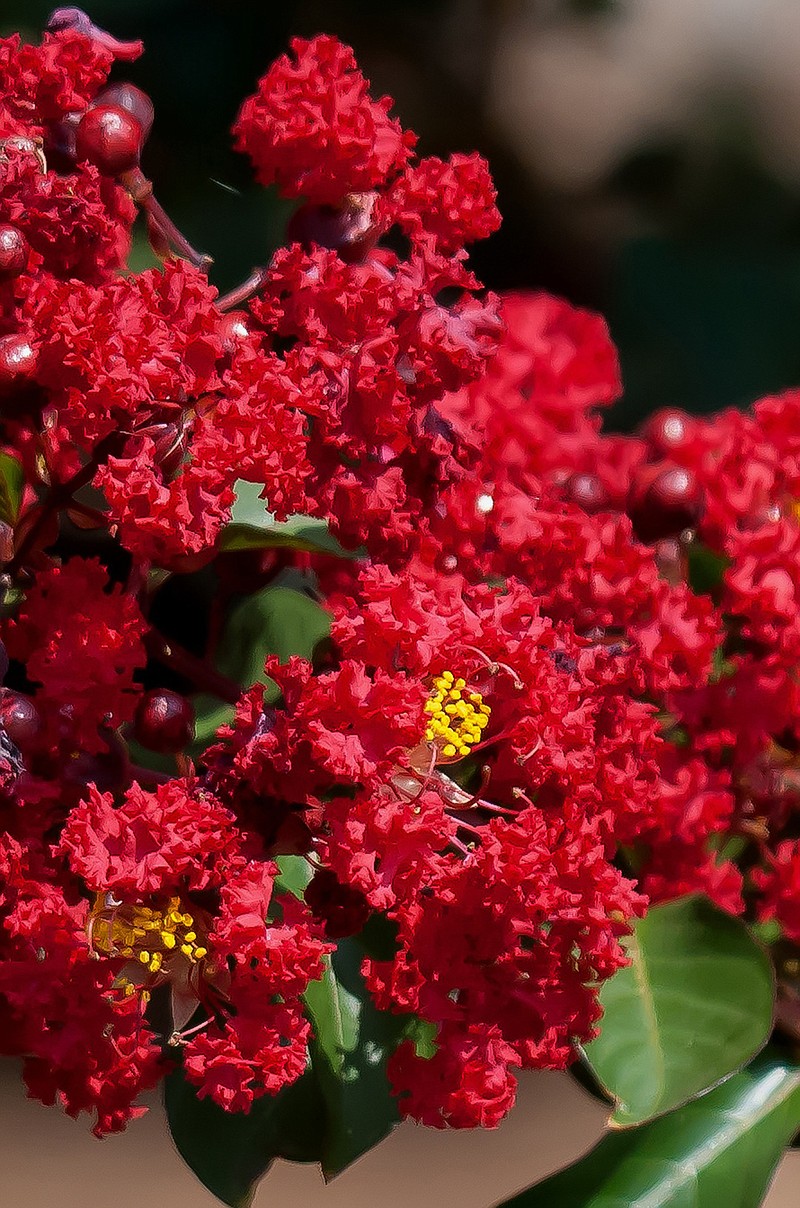A 300-foot long crape myrtle allée is a sight to behold especially when it is in full bloom as it happens to be right now. While the visitors are shocked, if not mesmerized by the amount of blooming color, they are equally stunned to know we don't prune. You see, most gardeners think that pruning gives you more flower canopy, but it simply isn't so.
Horticulturists everywhere have taken up the banner to end crape murder which is the unnecessary topping or pollarding of the trees. Several universities have gone a step further, which is to suggest picking out the right crape myrtle based on mature size for your location and let them grow as natural as possible, with minimal pruning.
My friend, Greg Grant, who is Research Associate at Piney Woods Native Plant Center, at Stephen F. Austin University in Nacogdoches, Texas, has set up what he calls a "crape myrtle abuse-free zone," no spray, no irrigation and no pruning. They will be there he said minding their own business and pretty in pink, and all of the other colors too.
The same can be said for the crape myrtle allée at the Coastal Georgia Botanical Gardens in Savannah, Ga. The only difference is ours are a little older and adorned with a little, albeit minimal, obligatory Spanish moss. In addition to the riotous color that rivals any cherry or redbud festival in the country, there is also bark of staggering beauty year round and a winter structure most didn't know existed, which is of course, because everyone has been pruning.
Now don't get me wrong, sprouts or suckers should always be removed. In the initial training you may even desire to limb up but I can tell you the prettiest jaw dropping crape myrtle on our property is the white blooming acoma with a weeping habit where the blooms grow all the way to the ground. It is also much taller and wider than most would have predicted.
Obviously we should remove broken or damaged branches and if you feel the need crisscross branches. Feel free to deadhead seed pods if easily accomplished which quickly stimulates another round of blooms. But I will tell you no one was more surprised than me to find birds chattering in the crape myrtles one foggy morning. Believe it or not cardinals were eating the dried seeds.
As you walk our crape myrtle allée you will notice that some do have a pleasant fragrance. I'm not sure if my friend Greg first came up with the descriptor of crape myrtles being called the 'Lilacs of the South' but it certainly seems to be a most worthy, if not appropriate, adjective.
And though I am touting crape myrtles as some of my favorite trees, things have changed making it a good reason to stop by your favorite garden center. In downtown Columbus, Ga., it is a rivet show of red with a fairly new selection called cherry dazzle. It seems during the entire growing season, this dwarf 3-foot tall selection is in full bloom rivaling the bloom and structure of any shrub rose. There are now 6 colors in the dazzle series.
Remember to pick out a crape myrtle size appropriate for your location. They bloom best in full sun and will thrive in well-drained soil. Your nurseryman will help you pick out the best for disease resistance. The cold-hardiness zones are 7-9 although in colder zones 5 and 6 many gardeners are finding satisfaction growing them more shrub-like similar to a buddleia where they return from the ground each winter. Obviously pruning would be a normal practice in this situation.
Crape myrtles came to our country in the 1700's from China, Asia and Japan. Their long season of richly colored blooms, bark and a wonderful natural winter structure are among their many outstanding attributes.

